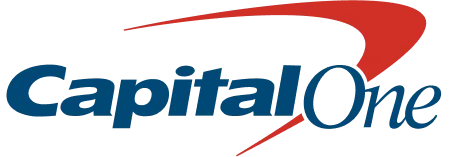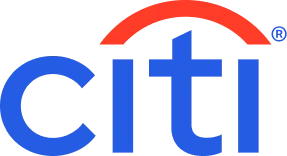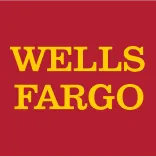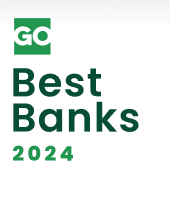National banks operate across and within a nation, state or country and maintain a nationwide presence as well as thousands of brick-and-mortar branch locations. Examples of well-known national banks across the United States include Bank of America, Wells Fargo and Chase among many others. Some of the benefits of being a customer with a national bank include the ability to access credit, save and manage money in checking and savings accounts and pay bills.
A national bank is a commercial bank chartered and regulated by the United States Treasury. To find the Best National Banks of 2024, GOBankingRates ranked these reputable institutions based on the following factors:
- Total assets
- Checking account minimum deposit
- Checking fees or overdraft fees
- Savings account minimum deposit
- Savings account APY
- Minimum opening deposits for new accounts
- Debit card features
- Mobile banking app ratings
- Free ATM network and availability
- Bauer rating
- Products/services offered
- Average mobile app rating
Here are GOBankingRates’ Best National Banks of 2024.
Our Commitment to the Readers
Our editors are committed to bringing you unbiased ratings and information. Our editorial content is not influenced by advertisers. We use data-driven methodologies to evaluate financial products and companies, so that all are measured equally. You can read more about our editorial guidelines and the banking methodology for the ratings below.

20 Years
Helping You Live Richer

Reviewed by Experts

Trusted by Millions of Readers
Compare the Best National Banks
Bank
Best For
Products Offered
Fees
Savings APY
Branch Access
Learn More
Bank of America, N.A.
Best for All-in-One Banking
Checking, savings, CDs, credit cards, loans, etc.
$0-$25 monthly, can be waived
3,900 branches around the world
Capital One, N.A.
Best for No Fees or Minimums
Checking, savings, CDs, money market, credit cards, loans, etc.
No monthly service charge or overdraft fee
Branches and cafes in select states
Citibank, N.A.
Best for Checking Accounts
Checking, savings, CDs, credit cards, loans, etc.
$0-$15 monthly, can be waived
Up to
Branches in many states
JPMorgan Chase Bank, N.A.
Best for Wide Network of Branches
Checking, savings, CDs, credit cards, loans, etc.
$0-$35 monthly, some fees easier to waive than others
4,700+ branches nationwide
PNC Bank, N.A.
Best for Money Management Tools
Checking, savings, CDs, money market, credit cards, loans, etc.
$0-$25, some fees easier to waive than others
Up to
2,300 branches coast-to-coast
U.S. Bank, N.A.
Best for Customer Service
Checking, savings, CDs, money market, credit cards, loans, etc.
$0-$6.95 monthly, some fees can be waived
2,000+ branches in 26 states
Wells Fargo Bank, N.A.
Best for Full-Service Banking
Checking, savings, CDs, credit cards, loans, etc.
$0-$35 monthly, some fees easier to waive than others
4,700 branches across most states
GOBankingRates Best National Banks

Best for All-in-One Banking
Bank of America, N.A.

Products Offered
Checking, savings, CDs, credit cards, loans, etc.
Savings Annual Percentage Yield (APY)
Branch Access
3,900 branches around the world
WHY WE LIKE BANK OF AMERICA, MEMBER FDIC
With one of the largest branch networks and highly rated mobile apps, Bank of America is a natural Best Banks choice for all-in-one banking. Three checking accounts give you plenty of options for managing your money, including a no-frills online account and an interest-bearing Advantage Relationship Banking account with all the bells and whistles for account holders who maintain higher balances. Add an Advantage Savings account, CD and bank IRA — as well as a brokerage IRA through Merrill Edge — and you’ve got all your banking under one roof. What’s more, Bank of America offers the convenience of banking online, in-branch or at any of thousands of ATMs, all of which have private audio for the visually impaired.
Sometimes you don’t want to overthink your next money move and just want to go with a name you can trust. As a big bank, it does have lower rates of return but this is balanced out by everything else it offers. Whether you’re looking for checking, savings, investment or loan options, we like Bank of America for its wide variety of accounts, services and more.

Best for No Fees or Minimums
Capital One, N.A.

Products Offered
Checking, savings, CDs, money market, credit cards, loans, etc.
Savings APY
Branch Access
Branches and cafes in select states
WHY WE LIKE CAPITAL ONE
As a mostly online bank, Capital One has less overhead than brick-and-mortar banks, which translates to fewer fees and minimums for customers. In fact, 360 Performance Savings has no fees and no minimums, yet accounts earn an outstanding APY rate. The 360 Checking account also has no fees or minimums, and balances earn APY. So not only do you keep more of your money — it also grows faster.
Despite not charging fees, Capital One delivers best-in-class features and service.
Capital One’s mobile banking app offers great functionality, including the ability to transfer money through the popular app Zelle® and perform most banking transactions without setting foot in a branch office, Capital One is distinguished for its convenient, streamlined banking experience. We’re not the only ones who praise banking with Capital One online: The mobile app has 4.5 stars on Google Play and iOS users give it a near perfect score of 4.8 out of 5.

Best for Checking Accounts
Citibank, N.A.

Products Offered
Checking, savings, CDs, credit cards, loans, etc.
Savings APY
Branch Access
Branches in many states
WHY WE LIKE CITI®
Citi received top honors as one of GOBankingRates’ Best National Banks in 2024, due in part to it’s excellent checking accounts. Access Checking is a checkless account with no monthly service fee for the first three months. Regular checking is also fee-free for three months and offers unlimited checking. Both accounts have no overdraft or returned-item fee, and you can waive the monthly fees with a Relationship Tier or $250 in Enhanced Direct Deposits. The three fee-free months should give most account holders plenty of time to set up their direct deposit to avoid fees after the promotional period ends.
Accessing your cash is easy — Citi has over 65,000 fee-free ATMS nationwide.
There’s a wide selection of additional financial products and services designed just for you at Citi, from savings accounts, CD accounts and bank IRAs to help grow your money to credit cards with low intro rates and cash back. Increase your wealth using tools like Citi® Self Invest or Citi® Wealth Builder and turn your homeownership dreams into reality with the HomeRun Mortgage program. We can’t help but love how you can do and achieve so much more with your money at Citibank.

Best for Wide Network of Branches
JPMorgan Chase Bank, N.A.

Products Offered
Checking, savings, CDs, credit cards, loans, etc.
Savings APY
Branch Access
4,700+ branches nationwide
WHY WE LIKE CHASE BANK
Chase is a winner in the Best National Banks category for the fact that it offers over 4,700 branches nationwide, which makes it easy to pop in to make a deposit or schedule a meeting with a banker, home lending advisor or investment advisor. To find your nearest branch, just enter your ZIP code or address from the branch locator on the Chase website.
Chase also offers multiple checking and savings accounts which you can open in a matter of minutes. Opening an account gives you the ability to manage your money via mobile and online banking and access thousands of ATMs to make withdrawals and deposits. From travel to earning rewards, Chase has an entire suite of credit cards that suit different lifestyles where cardholders can earn thousands of bonus points and receive generous offers.
Chase Bank also offers financing tools to help banking customers reach their financial milestones. Auto financing helps lock in your interest rate and monthly car payment before you visit the dealership, and if you’re looking to buy a home Chase can walk you through each step of the home lending process. Plus, depending on how you like to invest, you can invest on your own using J.P. Morgan Self-Directed Investing or utilize its team of personal advisors to create a financial plan expressly made for your goals.

Best for Money Management Tools
PNC Bank, N.A.

Products Offered
Checking, savings, CDs, money market, credit cards, loans, etc.
Savings APY
Branch Access
2,300 branches coast-to-coast
WHY WE LIKE PNC BANK
One of the key differentiators between PNC and its competitors is the PNC Virtual Wallet®, which has excellent tools to help you manage your money and plan ahead of expenses.
The Virtual Wallet is banking with a philosophy: Spend, Reserve and Growth.
Spend is a checking account for your day-to-day expenses. Reserve is also a checking account, and you can use it to create short-term spending goals and fund them over time. Growth is for long-term savings.
While fees and rates vary according to which of the three Virtual Wallet® levels you choose — Virtual Wallet, Virtual Wallet with Performance Spend or Virtual Wallet with Performance Select — all levels provide a dashboard where you can access your accounts and tools. For example, you can enter bill payments into a calendar and let your Virtual Wallet keep track of how much cash you have available for spending. All Virtual Wallet accounts have a Low Cash Mode that warns you when your balance is low.
Bringing checking and savings together with efficient money management tools helps you better control spending and save toward your financial — and life — goals. It’s not every day that a bank takes interest in helping you learn how to use your money better, but that gives PNC an advantage. For added convenience, the PNC Virtual Wallet connects to popular apps like PayPal and Venmo while being Zelle compatible.

Best for Customer Service
U.S. Bank, N.A.

Products Offered
Checking, savings, CDs, money market, credit cards, loans, etc.
Savings APY
Branch Access
2,000+ branches in 26 states
WHY WE LIKE U.S. BANK
U.S. Bank beats out its big four competitors, including Chase Bank and Bank of America, with exemplary customer service that includes a 24/7 phone number and a top-rated mobile app, so you’ll never have to wait until morning or the next business day to get help. Support is also available via the app, including video demos of banking features and live guidance with Cobrowse, which lets you share your screen with a customer service or technical rep who can guide you step-by-step through resolving your issue.
U.S. Bank also impressed the GOBankingRates team as a one-stop shop for consumers and businesses who need a full suite of banking services.
Products like U.S. Bank’s Smartly Checking account stand out for low fees, which are easily waived, and the potential to earn Smart Rewards. The rewards program can help eliminate out-of-network ATM fees and increase your interest rate for your linked savings account. A variety of certificates of deposit, plus savings and money market accounts, give consumers lots of options to save.

Best for Full-Service Banking
Wells Fargo, N.A.

Products Offered
Checking, savings, CDs, credit cards, loans, etc.
Savings APY
Branch Access
4,700 branches across most states
WHY WE LIKE WELLS FARGO
Nearly anywhere you are in the U.S., you’re likely to find a Wells Fargo nearby, with nearly 5,000 branches in all but 14 states and a network of 83,000 ATMs. This makes banking at Wells Fargo easy and convenient, while the mobile app also puts banking services at your fingertips. You can bank however you want, whenever you want, wherever you happen to be.
As one of the four largest banks in the U.S., with $1.9 trillion in assets, Wells Fargo also stands out for its variety of checking accounts, straightforward savings and other financial products such as CDs and investment services.
Easy online and in-person accessibility and the range of account types and services are why GOBankingRates recognized Wells Fargo as the best bank for all-around banking. Also, its Premier Checking Account was ranked by GOBankingRates as one of the best for 2024.
If you want to fill all your banking and investment needs under one roof, with the security of one of America’s top banks, Wells Fargo could meet your needs.
Research Methodology
To discover the Best National Banks, GOBankingRates looked at the top national institutions (located in 20 or more states). To determine rankings, GOBankingRates looked at the following factors: (1) total assets as sourced from the FDIC; (2) number of branch locations as sourced from the FDIC; (3) checking account annual fee; (4) savings account APY rate; (5) 12-month CD APY rate; (6) customer service products offered (24/7 customer service and live chat with a human); (7) Bauer rating (out of 5 stars); (8) products/services offered (auto loans, mortgage loans, credit cards, investment services and insurance); and (9) the average mobile app rating between the Android and Apple stores. All factors were then scored and combined, with the lowest score being best. Factors (1) and (4) were weighted 1.5 times, factors (2) and (8) were weighted 2 times, and factor (6) was weighted 0.5 times. For all savings and checking account data, only the basic accounts/products offered at each institution were analyzed. All data is up to date as of April 17, 2024.
What a National Bank Means
The purpose of a national bank, among other aspects, includes paying government bills and issuing a common currency people may transact with. National banks also assist businesses with transactions like lending money and cash deposits.
Differences Between National and Regional Banks
One of the primary differences between national banks and regional banks is size. National banks have many physical locations and a large ATM network while a regional bank is smaller physically as well in the amount of assets it has available.
Other differences include but are not limited to fee costs and customer service, the latter of which may be more personalized compared to a national bank’s more standardized services.
Pros and Cons of National Banks
Let’s review a few pros and cons associated with national banks.
Pros
- Single currency for the entire nation
- Sizeable amount of physical branches and ATM network
- Wide range of financial products and services
- Ability to manage federal government’s funds
Cons
- Fees may potentially be more expensive than at a smaller bank
- Customer service may be more standardized
- If the bank experiences a bank failure, its entire system of banks goes down
How To Choose a National Bank
Are you ready to become a banking customer at a national bank? Consider the following factors when choosing the right national bank for your financial needs.
Review the Fees
Fees are important when choosing a national bank since there are many common fees charged by banks which can quickly become expensive. Customers with larger deposits may be offered lower fees by national banks. If you find this pertains to your financial situation, find out if you qualify for lower fees and/or higher interest rates.
Read the Fine Print
Make sure to carefully read the fee schedule and account disclosures for the bank accounts you’re interested in as well as any other additional fine print outlining the terms and conditions of your account. Doing so will allow you to compare these offerings to other national banks and find any additional fees or restrictions you might not expect.
Check the APY
Many customers prioritize banking with financial institutions that have a high annual percentage yield. Most national banks are not known for high APY offerings on checking and savings accounts. This might be one reason why a recent GOBankingRates survey uncovered that 60% of participants keep $500 or less in checking, while 49% keep $500 or less in savings. However, it’s still worth reviewing a national bank’s website to learn more about its APY rates.
Explore the National Bank’s Website and App
Even if you plan to primarily bank in-person, it’s still a good idea to have an understanding of how to navigate and use the bank’s website and app. GOBankingRates found than over one in four, which is about 27% of survey respondents, do all of their banking online. This is about 31% of 25- to 34-year-olds. That shows an increasing reliance on this medium. Should something unforeseen happen and you need to conduct a bit of banking online, you’ll be glad you took the time to familiarize yourself with the bank’s website and app.
FDIC Insurance
The FDIC insures most deposits at national banks. These banks carry a standard insurance limit of $250,000 per depositor, per bank and per ownership category. Additionally, this standard insurance may also be supplemented with additional private insurance from national banks. It’s a good idea to review bank policies if you are considering a few national banks if you will require a great deal of supplemental account insurance from your financial institution.
Which National Banks Are Biggest?
In making this consideration, it’s a good idea to consider banks in terms of assets. A large financial institution includes firms with assets of $100 billion or more.
Caitlyn Moorhead, Daria Uhlig, Ann Logue, John Csiszar and Gabrielle Olya contributed to the reporting for this article.
Recap of Winners
- Bank of America – Best for All-in-One Banking
- Capital One – Best for No Fees or Minimums
- Citibank – Best for Checking Accounts
- JPMorgan Chase Bank – Best for Wide Network of Branches
- PNC Bank – Best for Money Management Tools
- U.S. Bank – Best for Customer Service
- Wells Fargo Bank – Best for Full-Service Banking
FAQ
Customers preparing to join a national bank may have additional questions which require answers before making this decision. Here are some common questions and answers about national banks.- Which bank is the best nationwide?
- GOBankingRates has ranked the following banks among the Best National Banks for 2024:
- Bank of America - Best for All-in-One Banking
- Capital One - Best for No Fees or Minimums
- Citibank - Best for Checking Accounts
- JPMorgan Chase Bank - Best for Wide Network of Branches
- PNC Bank - Best for Money Management Tools
- U.S. Bank - Best for Customer Service
- Wells Fargo Bank - Best for Full-Service Banking
- GOBankingRates has ranked the following banks among the Best National Banks for 2024:
- What is the No. 1 bank in America?
- In terms of assets JPMorgan Chase is the number one bank in America, with Bank of America, Wells Fargo and Citibank rounding out the big four national banks.
- Which bank is the most reliable?
- Here are some of the banks ranked among the Best National Banks in 2024 due to reliability, customer service, and variety of products and services:
- Bank of America
- Capital One
- Citibank
- JPMorgan Chase Bank
- PNC Bank
- U.S. Bank
- Wells Fargo Bank
- Here are some of the banks ranked among the Best National Banks in 2024 due to reliability, customer service, and variety of products and services:
- Are big national banks better than smaller banks?
- There are several notable differences between big banks and smaller banks. Big banks, for example, may offer a wider range of financial products and services, like credit cards, loans and wealth management services. Smaller banks may have fewer products and services or specialize in offerings tailored to the local area. Big banks may also have a substantially larger ATM network and branch locations while small banks will have fewer of both.
- Do national banks pay higher interest?
- Compared to other types of banks, larger banks generally pay lower interest rates. This is due to having an extensive network of locations and many employees which results in higher expenses.
- Are national banks safer?
- While not every financial institution is created the same, your money should be safe at a national bank which is federally insured with FDIC insurance. Remember that the standard insurance limit is $250,000 per depositor, per bank and per ownership category. For additional peace of mind, review the bank's financials before deciding to commit money to it.
See Best Banks Winners From All Categories
*Capital one interest rates accurate as of April 17, 2024. See website for all current rates.



 Written by
Written by  Edited by
Edited by 












